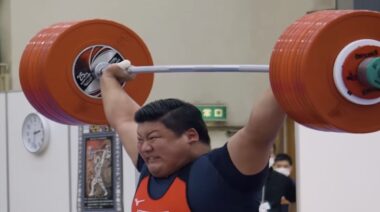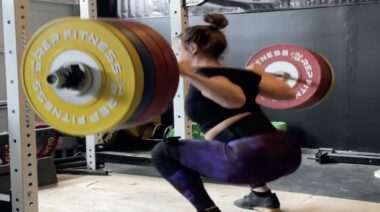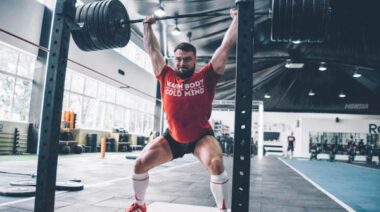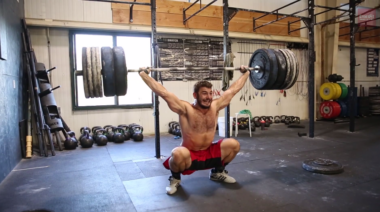As the first week of the Games of the XXX Olympiad wrap up in Rio de Janeiro, Brazil, all weightlifting creatures are indeed stirring. The controversies leading up to the Games, including the country’s lack of readiness, the Zika virus, and the doping that banned Russian athletes, all have an effect on the competition.
Before the Games even started, one Olympic story has emerged that was encouraging to those of us in Canada. Canadian weightlifter Christine Girard, the 63kg bronze medal winner in London, may be upgraded to a gold medal after the top two finishers in her weight class tested positive for doping. The appeals process is long and complex, so it might be a while for Girard to be handed the gold medal, but it certainly gives renewed hope for our team.
Banned substances are the “weeds in our garden” but as is well known now those weeds now grow very well in a lot of gardens. In addition, they are no respecter of gender. I remember 30 years ago when one female professor commented that drug use could only occur with men. Women certainly would never try to gain such an advantage. Unfortunately, she was proven wrong. We cannot be complacent about female drug use. Women’s bodies do not produce near as much testosterone as men’s, so when a woman does use real or artificial testosterone, the effects will be that much more dramatic, increasing the temptation.
While I do not know if Christine Girard’s 2012 sample was tested or not, I am optimistic. She had tested negative frequently at home and if all things work out it will perhaps do more to show that drug usage is not de rigeur in our sport. If nothing else, the Russian Olympic ban opens up space for other, hopefully clean athletes to compete in the Games.
The Early Days
In the early days of women’s international weightlifting, three countries blazed trails for women’s weightlifting: Canada, the United States, and Great Britain. I remember in the 1960s the consensus among many that weightlifting would not be affected by any female invasion. It was not because of resistance; we just assumed that women weren’t interested in the first place.
But before our first gray hairs emerged we would see that assumption go down the drain. As a few pioneers entered contests in the 1970s, and a few more in the 1980s, things were well on their way. Women in Western countries were the first to make this move because women in the Eastern Bloc and many third-world countries were either ideologically opposed to women lifting or simply could not afford to devote resources to what they considered would be a very unnecessary activity. Over time, Western countries lost their early dominance in the sport; however, the situation is beginning to turn the tides.
The talent pool for female lifters widens each year. [Photo credit: Breaking Muslce/Bruce Klemens]
Weightlifting Today
Let’s start with “my” team. In 2016 the Canadian team consists of one man and one woman.
The field today is extremely competitive, and with only 250 lifters allowed in the Olympics, we are lucky to have even two athletes represent our county. Marie-Eve Beauchemin-Nadeau is competing in the 69kg category while Pascal Plamondon is slated for the men’s 85 kg. Marie-Eve competed at London in 2012 and this is Pascal’s first Olympics.
Like Canada, the United States has had more recent success with its women lifters, although the men are getting better. The Americans have three women in Rio. Morghan King competed in the 48kg category, the one that Tara Cunningham won in the 2000 Olympics. She finished in sixth place at Rio, lifting more than double her bodyweight in the clean and jerk and setting a new U.S. record in the snatch of 83kg.
Jenny Arthur will carry U.S. hopes in the 75kg category. She has never lifted in the Olympics. The 75+ standard bearer will be Sarah Robles, who competed in the 2012 Games and has improved considerably. Success at the Games will require a sharp and focused performance on the platform. The lone U.S. male competitor is the 94kg Kendrick Farris, a veteran of both the 2008 and 2012 Games.
Like Canada, Great Britain has only one male and one female competitor. In the women’s 69kg their hopes rest on Rebekah Tiler, a young lifter yet to celebrate her 17th birthday. Although likely too young to be a major factor in the medal standings, her performance at the Houston Worlds impressed many who now have great hopes for her in the future. Their male entrant is newcomer Sonny Webster, also in the 94kg.
Despite this athletic potential, all three countries might best be described as “rebuilding.” As any sports fan knows, this is a media euphemism for a season that is mediocre at best. None are likely to win medals but there is optimism for the future. Interestingly, instead of winning against a weak field as in times past, these countries are now slowly building up to respectable finishes against very strong fields. The potential is exciting. Where will we be at in 2020?
A Growing Field
The prospective addition of one more weight category for the women will come to pass after the next IWF Congress in early 2017. It will come at the heavy end of the spectrum, and although its exact limit has not been mentioned at this time, 83kg is frequently speculated upon.
Society can always use more female role models, not only in weightlifting but in other sports, especially the non-traditional ones. I also find it very encouraging that the media is no longer covering female weightlifters as a ”man-bites-dog“ story. Female weightlifters are now treated as legitimate athletes and are no longer asked if they think their lifting will hurt their ability to have children and other such inanities. For the record, Girard has had not one, but two children since London.
Enjoy watching the Games and let the performances inspire you to work hard in the gym.
Lean about one of the great females of the sport:






